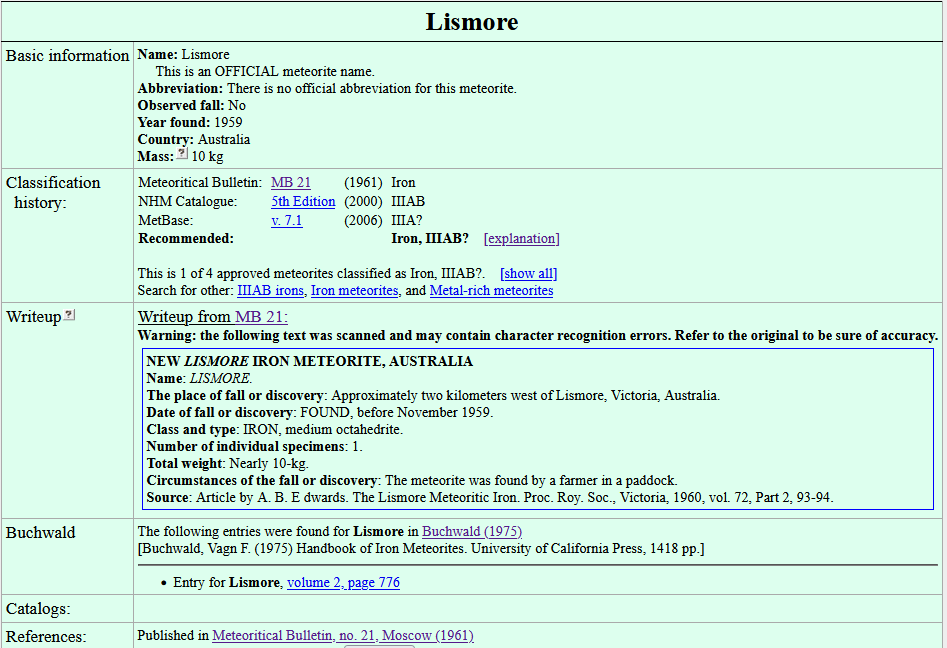
Meteorite
Has anybody found another one? There are often more!
Meteorite. In 1959 Mr Jack Spinks was picking rocks from his paddock on "Selkirk" (now called "Skippy's") 2km west of Lismore.
One rock was very heavy and he took it to the School of Mines at Ballarat.
It is thought to be now at Melbourne University and a sample is at the museum, as in the photo below.It was analysed to be 91% iron, 8% nickel, 0.5%cobalt, and was declared to be a meteorite.
This was reported in the Proceedings of the Royal Society of Victoria on 29 July 1960. photos below.
Meteorite 17cm across, 10kg weight.
Part is in the Melbourne museum geology display (above).
Has anybody found another one? There are often more!
Meteorite. In 1959 Mr Jack Spinks was picking rocks from his paddock on "Selkirk" (now called "Skippy's") 2km west of Lismore.
One rock was very heavy and he took it to the School of Mines at Ballarat.
It is thought to be now at Melbourne University and a sample is at the museum, as in the photo below.It was analysed to be 91% iron, 8% nickel, 0.5%cobalt, and was declared to be a meteorite.
This was reported in the Proceedings of the Royal Society of Victoria on 29 July 1960. photos below.
Meteorite 17cm across, 10kg weight.
Part is in the Melbourne museum geology display (above).
Australites
 Australite found by Jim Anderson by a dam at ViteVite in about 1985.
About 5cm diameter. The flange is probably broken off on landing.
Australite found by Jim Anderson by a dam at ViteVite in about 1985.
About 5cm diameter. The flange is probably broken off on landing.
Australite tektites are a specific type of tektite found in Australia and surrounding regions, formed from the Australasian impact event approximately 780,000 years ago. They are characterized by their dark color, unique shapes like discs and bowls, and often feature a flange on their outer edge. These tektites are the result of a massive meteorite impact, likely in the Bay of Tonkin, which melted and ejected terrestrial rock, some of which re-entered the atmosphere and cooled into these glassy forms.

